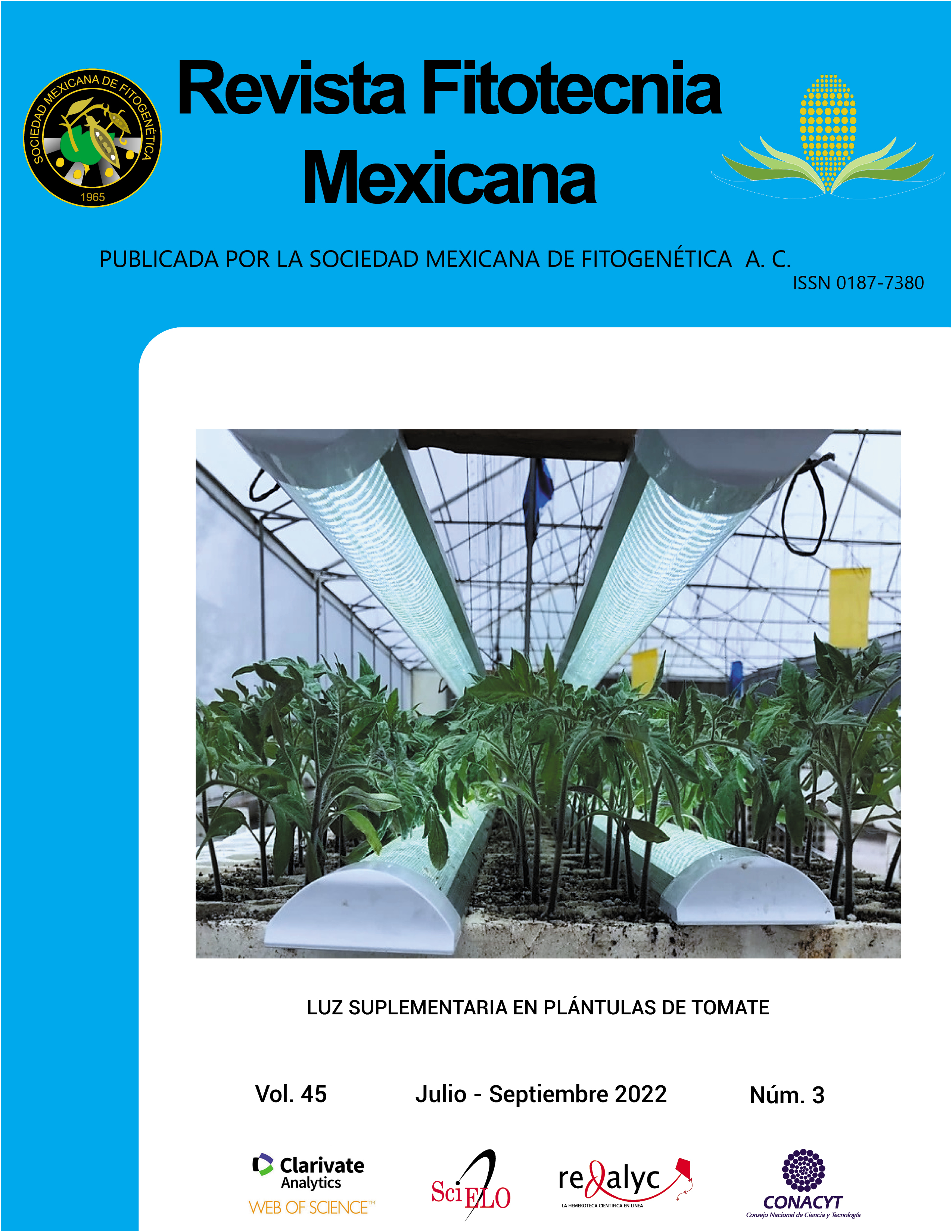SEASONAL PERFORMANCE OF ROSEBUSH IN THE GENERATION OF BASAL SHOOTS WITH GROWTH REGULATORS
Main Article Content
Abstract
The cultivation of cut rose (Rosa spp.) in Mexico stands out as one of the flower sector activity that creates the most economic revenue. In commercial rose production, the generation of production-type basal shoots per plant (BSP), which produce flower stems, is limited by physiological and environmental factors. Such factors increase the number of short and inferior BSPs (called ‘blinds’). This research aimed to evaluate the effect of various growth regulators and a nutritional supplement on the number and quality of rose basal shoots during the year's four seasons. A greenhouse held the experiment, which contained 696 Samourai cultivar rose plants under a randomized complete block design with a split-plot arrangement. Five treatments based on cytokinins (C), gibberellins (G), auxins (A), C + G + A complex (CGA), nitrogen-calcium (NCa), and a control (T) were applied above the grafting point. Plants with basal shoots (PBS) and total, productive and blind BSP were counted and analyzed by analysis of variance, comparison of means (Tukey, P ≤ 0.05) and Pearson correlations. Mean comparison determined significant differences (P ≤ 0.05) in PBS and that Winter treatment A promoted the highest PBS number. Highly significant season × treatment interaction (P ≤ 0.01) highlights a 50 % increase in average PBS with A, C, G, CGA and NCa treatments compared to T in Winter, in relation to the other seasons (which values were close to zero). There were significant differences (P ≤ 0.05) in productive, blind, and total BSP, with higher values in Winter A for the three categories. CGA was the best treatment in the productive BSP/blind BSP ratio. It was concluded that CGA decreases blind BSP and increases productive BSP, producing a greater number of floral stems.

